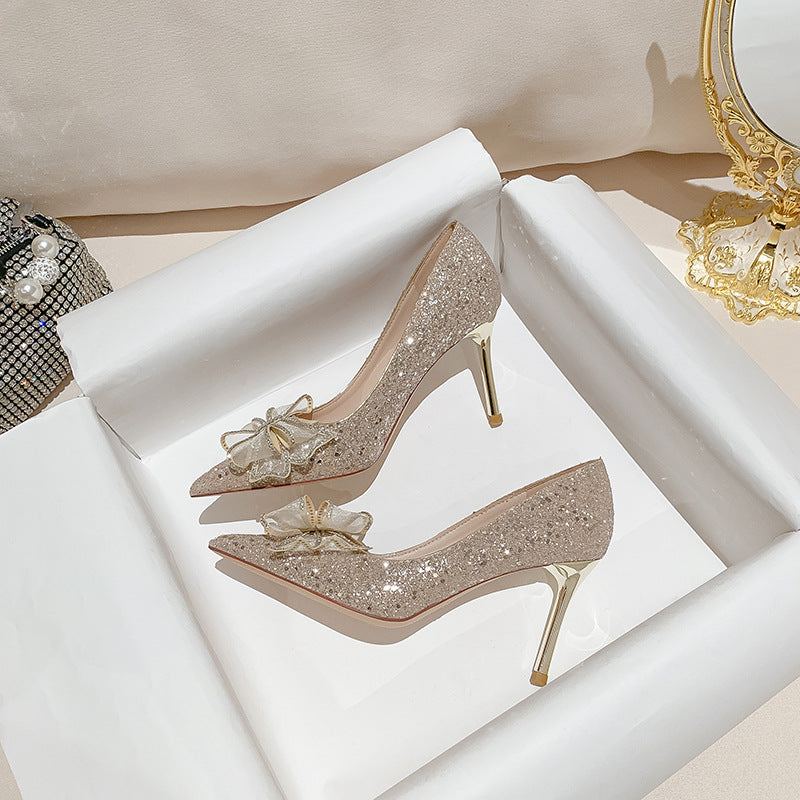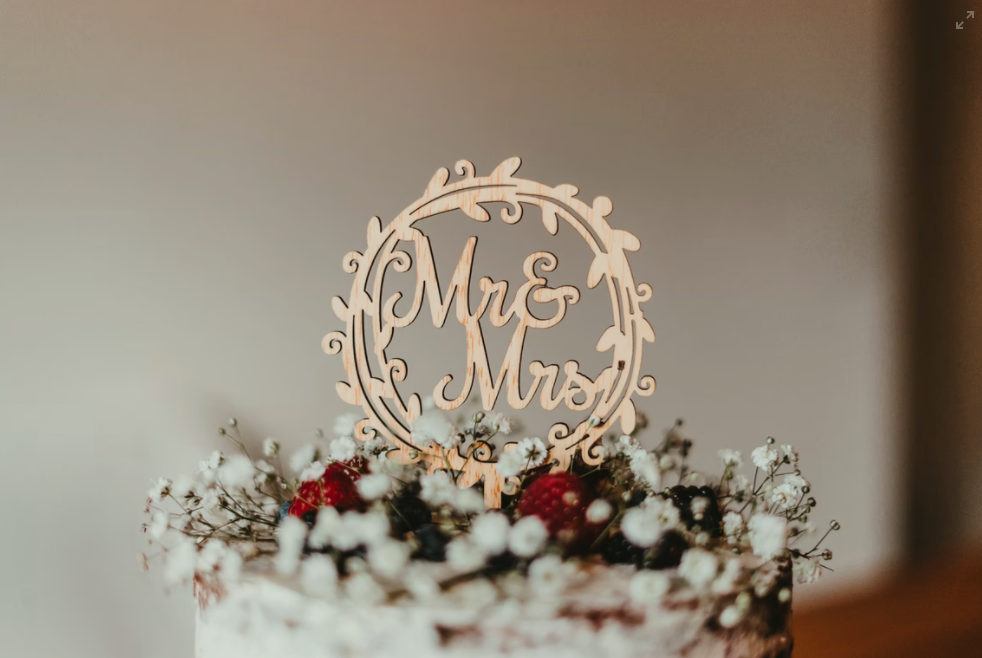How to Plan a Wedding from Beginning to End
If you are getting married, congratulations! This is a big step in your life, and it can be overwhelming. The good news is that there are so many resources out there to help you plan the perfect wedding that will match your needs. But what if you don't know where to start? Well, this blog post will tell you everything on how to plan a wedding from the beginning to the end. And by following these simple steps, you can plan your perfect wedding with ease.

Step 1: Set a budget and stick to it
This is probably the most important step in wedding planning! Sit down with your fiance and realistically estimate how much you can afford to spend on your wedding. Establishing a clear financial goal will help narrow down the options as you continue the wedding planning process.
Remember that everyone has different ideas about how much money should go into planning a wedding. And while some people don't mind spending thousands of dollars on their special day, others prefer planning something simple that won't put them in debt.
Whatever your budget is, start by figuring out how much you can realistically spend without going into debt. And don't forget to take into account things like the cost of the wedding location, the dress, the catering, the DJ, and any other vendors you might need.
After determining a reasonable range of spending, draw up a detailed outline of exactly how that money will be allocated across different areas that include: the wedding venue, catering, photography, attire, and so on.

Step 2: Choose a date
Once you have your budget in hand, start thinking about when you want to get married. It's best to give yourself plenty of time to plan, so if you're thinking about getting a year from now, start planning now. You'll want to consider a few factors when making this decision:
- Are you looking for a date that is six to eight months away, or are you flexible on dates? The closer your date is, the more likely it is that vendors will be booked.
- What season are you looking for? Certain times of year are more popular than others for weddings.
- Religious holidays (if any).
- Availability of venue.
- Weather forecasts (in case of outdoor ceremonies).
You also want to make sure the dates you choose will not interfere with other commitments your family or friends may have. Moreover, you'll want to coordinate with any vendors who might be involved in the wedding, so they don't have conflicting appointments.
Once you've found a date that works for everyone, you can book it and start making plans so you won't be rushed at the last minute. Also, remember to send out save-the-date cards about four to six months before your wedding, so people have adequate time to make their schedules work with yours.

Step 3: Choose a location for your wedding
The location is the single most important part of planning a wedding. You can choose to get married in any number and combination of places: outdoors in the garden, in the beautiful ballroom, in a nearby scenic spot or hotel. If you're having trouble deciding on where to hold your ceremony and/or reception, consider these questions when evaluating venues:
- What's included? Many locations for weddings charge extra for event basics such as tables and chairs. Check out what will be provided before choosing a location. By doing so, you'll know what you are getting into financially. Also, keep in mind that some locations may not allow certain decorations or vendors (i.e., food trucks) that are not part of their standard package.
- Is the timing right? Look at the hours of operation for each location. If you need to be out by a certain time, make sure that there won't be any interruptions in service (i.e., having to stop your reception before it's over because they are closing). Also, make sure that your ceremony will start on time.
- Do I want indoor or outdoor? What kind of weather can I expect? You may love the idea of getting married outside, but remember, a forecasted thunderstorm just might put a damper on your big day. Be sure there is adequate cover if it looks like rain and that the temperature will be comfortable for your guests.
- What is the capacity? This is especially important to consider if you are planning a more intimate wedding. If only 50 people can comfortably fit into the location, but you're inviting 150, you'll need to start thinking about expanding your search.
Consider all of these things when choosing a location for your wedding, and you're sure to find the perfect spot for your big day.

Step 4: Pick out a theme for your wedding
The next step of planning a wedding is to choose your theme. While it may be tempting to say, "We want to keep things simple and classic," every couple has their own interpretation of what that means.
Deciding on your wedding theme will help set the tone and overall look of your wedding. It can be anything from themed weddings (like Halloween) to color schemes (like red and black). And once you have your overall vision in mind, it's time to decide whether or not you want to hire help to make sure things go smoothly, like an event planner. If this is something you'd like to consider, find someone who will fit within your budget and who shares your same vision for the wedding.
Your planner will ensure that all aspects of your big day are covered, so you don't have to worry about anything on the actual wedding day. And if you are on a tight budget, consider hiring a day-of coordinator instead of a full-service planner.


Step 5: Shop bridal attire and accessories
It is time to start shopping for your wedding attire and accessories. This can be a fun but daunting task, as there are so many options available. Try to pick styles that reflect your personality and that you will feel comfortable wearing on your big day. If you are having a destination wedding, be sure to check the dress code before making any purchases.
When shopping for bridal attire and accessories, keep in mind the following:
- Many bridal boutiques offer free alterations, so don't be afraid to order a gown that needs some tweaks.
- Buy a pair of shoes that matches your dress and feel comfortable walking in.
- Wear what makes you happy! If you feel beautiful in it, chances are everyone else will too.
Another thing to keep out while shopping for bridal attire is your jewelry selection and bridesmaid dress. You can visit Cicinia online store that offers a variety of bridesmaid dresses. Keep in mind that since many of these items will have special meaning, you will want to save them for your wedding day.


Step 6: Create your guest list and begin mailing invitations
One of the more challenging aspects of wedding planning is putting together the guest list. You will need to consider who you want to invite, as well as how many guests you can accommodate. It's also important to remember that not everyone invited to your wedding will be able to attend.
Some couples choose to create a "plus one" policy for their guests, meaning that anyone who is unmarried or does not have children can bring a guest. This can help keep the guest list manageable while still allowing for some flexibility.
If you are struggling with who to invite or how to cut down the list, there are a few things you can do:
- Get creative with your invitations. If you want to invite more people than you have room for, consider sending out smaller invitations that require a response. This will help you get a better idea of how many people will actually be able to attend.
- Set up a website or Facebook group for your wedding and ask guests to RSVP online. This is a great way to keep track of who is coming without having to send out individual invitations.
- Have a conversation with your partner about who is most important to them and make sure those people are invited.
- Remember that you don't have to invite everyone from your social circles. If there are people you don't want at your wedding, don't feel obligated to invite them just because they are friends with your family or coworkers.
Once you've finalized your guest list, it's time to mail out invitations. Be sure to include all of the important information your guests will need, like directions, parking information, and what to wear.

Step 7: Book a photographer/videographer
One of the most important things for any wedding is capturing all the memories. This is why it's so important to book a good photographer and videographer who will be able to capture all the special moments.
Start by looking at portfolios and reviews from past clients to get an idea of what they're capable of. Then set up a meeting to discuss your needs and the cost. If you're not looking to spend a lot of money, try asking friends or family members if they have any recommendations.
A good photographer/videographer should be able to guide you through the process and give helpful tips on what to do and when. There are many photographers and videographers to choose from, so do your research and ask for referrals from friends and family.

Step 8: Marriage License
Once you have set a date, the next step is to apply for a marriage license. This can be done through your local county clerk's office and generally requires both parties to appear in person. You will need to provide proof of identification, and if either party has been married before, proof of divorce or death of the previous spouse. There is usually a waiting period of a few days to a week after applying for the license before it is valid. So make sure to factor that into your timeline.

Step 9: Hire your vendors
Next, start contacting wedding vendors. These include caterers, florists, and DJs, to name a few. Many couples choose to use the same vendor for multiple services, which can often result in discounts. Be sure to get references and reviews from past clients before making any final decisions.

Step 10: Finalize your wedding details
Once you have all of your vendors booked, it's time to start finalizing the details of your wedding. This includes deciding on what type of flowers you want, what type of cake you want, and what type of music you want to be played. You will also need to create a seating chart and decide on who will be doing the catering.

Step 11: Rehearsal and wedding day
The final steps are to schedule a rehearsal and plan out your wedding day. The rehearsal is important so that everyone knows where they need to be and what they need to do on the big day. The wedding day itself should be as stress-free as possible, so make sure to have a timeline of events and make sure all of your vendors know what they need to do.

In summary
Planning a wedding can be stressful and difficult, but with the right planning tools and tips, it doesn't have to be. We hope these steps on how to plan a wedding from the beginning to the end have helped you found some helpful advice. Now it's your turn! Put your newfound knowledge into action and get started planning the best day of your life.





